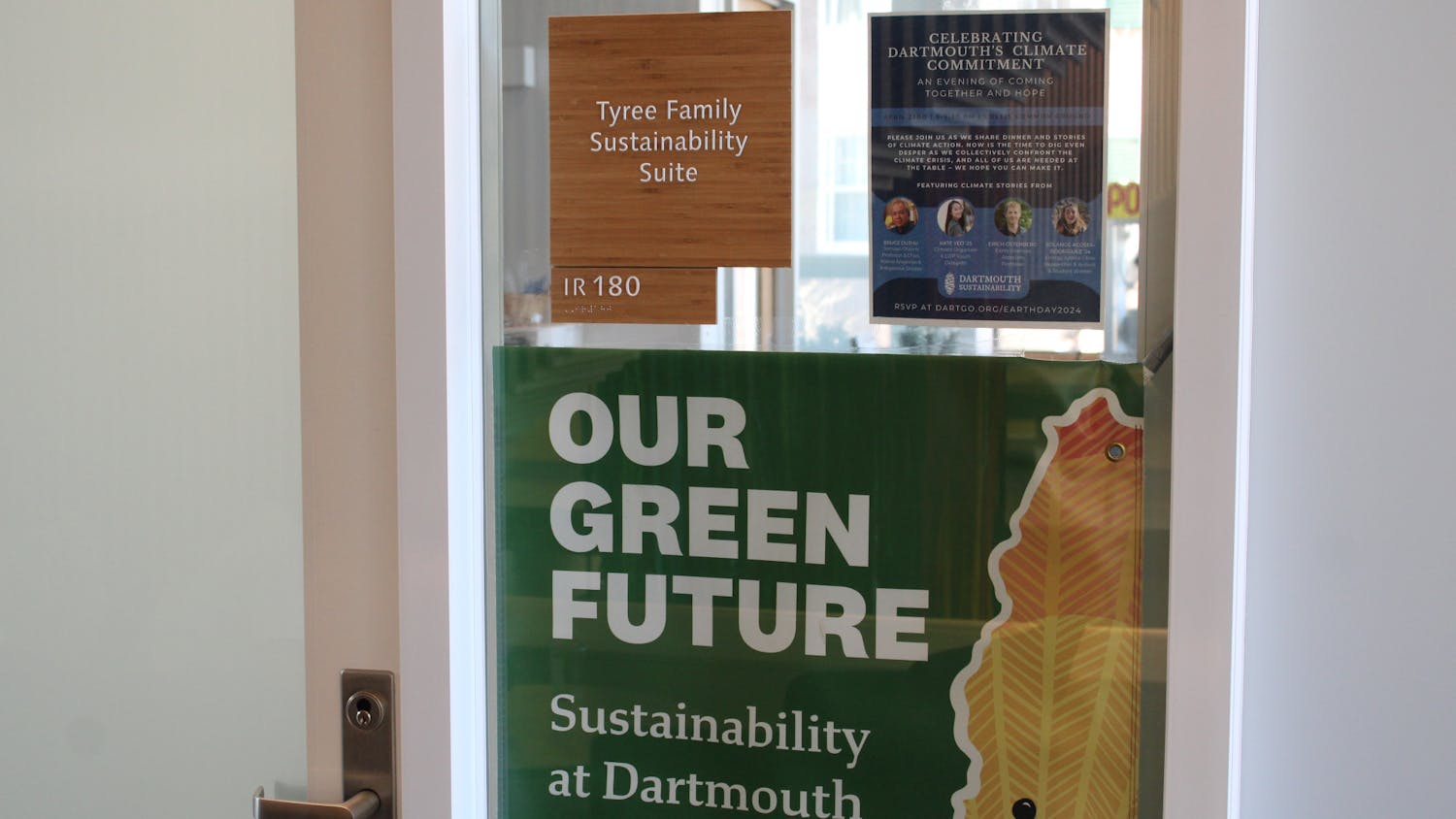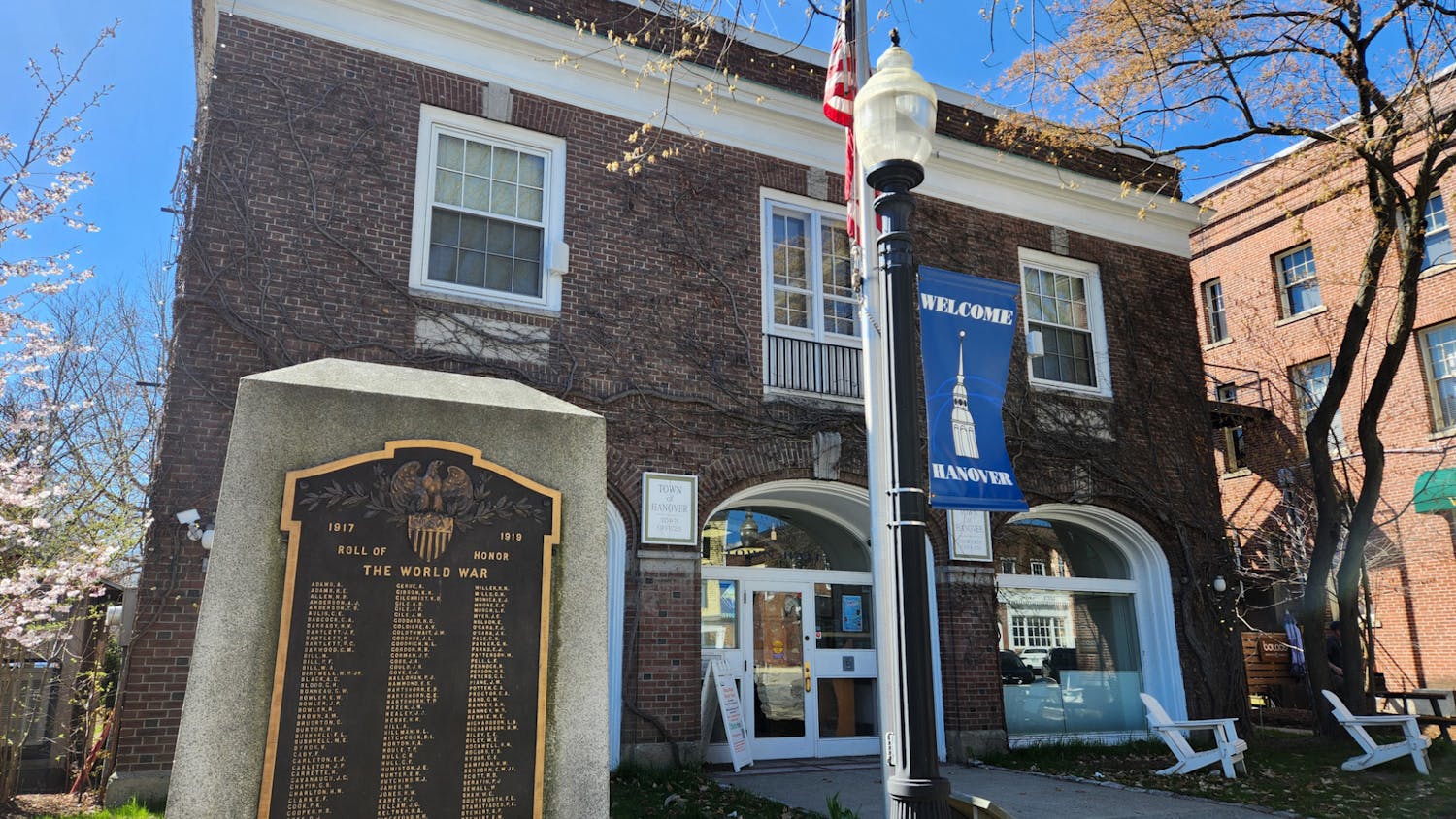When members of the Class of 2006 take their first steps out of their respective buses, planes and mothers' stationwagons on to the Dartmouth campus, they can expect their first encounters with the Hanover community to come not from sage professors, perky undergraduate advisors or intimidating administrators, but rather by way of a set of bizarrely-clad, ass-boxing kids parked in front of Robinson Hall to lead and supervise the Dartmouth Outing Club's ever-popular Freshman Trips.
Whatever outdoor adventure each student plans to embark on, be it hiking, kayaking, canoeing, hiking, biking, hiking, farming, fishing or, oh right, hiking, he or she can count on a lot of surprises and a few certainties: fun-packed days and late nights of bonding with fellow "trippees," a crash-course in some of the College's goofiest traditions and entirely too much cous-cous and Cabot cheese.
After a luxurious first night in the lounges of Dartmouth's much-lauded Choates dormitory -- at times dubbed "Choatopia" for the benefit of DOC Trip-bound freshmen and known for its hamster-cage-meets-'70s-motel architecture -- buses will whisk students off to all corners of the state for a four day introduction to the forests, mountains, lakes and rivers of rural New England.
The fun does not, however, have to end there. If current trends continue, roughly a quarter of incoming freshmen will fork over the requisite $15, $35 or $200 for an annual, student career or lifetime membership to the DOC.
The most solemn first-year tradition is matriculation. Students often dress up for the ceremony, in which they officially become members of the student body and receive a handshake from the President of the College. The barbecue held in the President's backyard is the first time that all first-year students gather together.
After the first-year students have had a few weeks to settle in, the major traditions surrounding Homecoming weekend take place.
The most impressive tradition, and probably the most "traditional" tradition, is the building of an enormous bonfire by the first-year class in the middle of the Green. The 60-tier stack of wood is lit on Dartmouth Night -- held the night before the Homecoming football game -- when the entire school gathers on the Green to listen to students and alumni give speeches in front of Dartmouth Hall.
This tradition dates back to 1893, when the first organized bonfire took place as students celebrated a football victory over Amherst College.
For many years after that, bonfires were built after football victories using anything flammable in Hanover, including fence posts.
First-year students used to begin building the bonfire several days before the big weekend. Traditionally, upperclassmen would attempt to sabotage the structure during the night while first-years stood guard.
On a fateful Wednesday night in 1992, that tradition turned violent when approximately 600 students stormed the structure. The Hanover Police reported a full-fledged riot on the Green with students wielding baseball bats and hockey sticks.
Dean of the College Lee Pelton suspended construction of the bonfire for a full day, and although the bonfire proceeded as scheduled that year, the brawl of 1992 had a lasting effect on the bonfire tradition.
Since then, the bonfire wood has been delivered later, giving students fewer days for construction. Also, the bonfire is no longer guarded by freshmen at night, as all construction must cease at dusk and be abandoned until the next morning.
Today, especially after the tragedy at Texas A&M University two years ago, in which a bonfire collapsed and killed dozens of students, the building process is well organized. Bonfires are carefully constructed by freshmen wearing hard-hats and supervised by Safety & Security officers.
The night of the burning of the bonfire begins with the relatively new tradition of "The Sweep," invented by the College in 1993 compensate for imposing stricter restriction on bonfire construction.
During the event, first-years parade from residence hall to residence hall collecting fellow class members until the class is united. Together they march down Main Street and swarm onto the Green.
The first sweep in 1993 was almost the last, thanks to the destructive first-years in the Class of 1997. Much to the alarm of townspeople and the College, the class had a wild stampede through the town, trampling cars and uprooting street signs in the process.
A picture in The Dartmouth from Homecoming Weekend in 1993 shows a member of the Class of 1997 running around the bonfire brandishing a stop sign. After 1993, the College limited the time allotted for the sweep to 30 minutes and provided more careful guidance and organization to the march.
Continuing a tradition started in 1904, members of the new class are urged by upperclassmen to run laps around the burning bonfire corresponding to their year. For example, the most dedicated members of the Class of 2005 went for 105 laps, but others chose to do 4 laps or to watch from the side-lines instead.
While many traditions live on, there are some that have ended with the passing time. After women were admitted, the College stopped using the "The Men of Dartmouth" Alma Mater and the Dartmouth Indian mascot.
Another tradition that has recently gone by the way-side is the term "freshmen." The College now officially calls all new students "first-years" in order to be more inclusive and politically correct. However, the unique Dartmouth slang "shmen,' which describes all new students, is still part of the common Dartmouth student's lexicon.
Other variations of the word include "shmob" to describe a group of first-years walking together, and "shmenu" to describe the first-year face book, officially called the Green Book.
Another tradition that has been outlawed by the College since 1986 is the first-year rush of the football field during the Homecoming game. Despite threats of punishment of three terms of probation, arrest by the Hanover police and a fine of up to $500, every year at least one daring first-year still seems to attempt to rush.
Before 1986, this College-sanctioned tradition entailed first-year students filing onto the field in an orderly fashion to form their class numbers. The Class of 1989 ended the tradition when they mobbed the field and injured two people in wheelchairs who were sitting along the sidelines.
One athletic tradition that continues today is the throwing of hundreds of tennis balls onto the ice during half-time of the first Dartmouth men's hockey game. This tradition, while tolerated at first, results in penalties for the Dartmouth team if it continues after halftime is over.
A humiliating tradition that was ended in 1973 involves "freshmen caps," or beanies, which upperclassmen forced freshmen to wear for the first few weeks of school.
In the 1950s, Dartmouth Night offered a way for freshmen to escape the annoying headgear: a tug-of-war with the sophomore class. If freshmen were victorious, they could shed the beanies. If they failed this mission -- and upperclassmen usually banded together to ensure failure -- the beanies had to be worn until Nov. 14.
In 1963, the tug-of-war turned violent when distraught freshmen, having lost the competition, burned their beanies and stormed Thayer Dining Hall.
As with most of Dartmouth's original traditions, the beanie tradition gave way to more tolerant and inclusive activities that foster a sense of Dartmouth pride.



